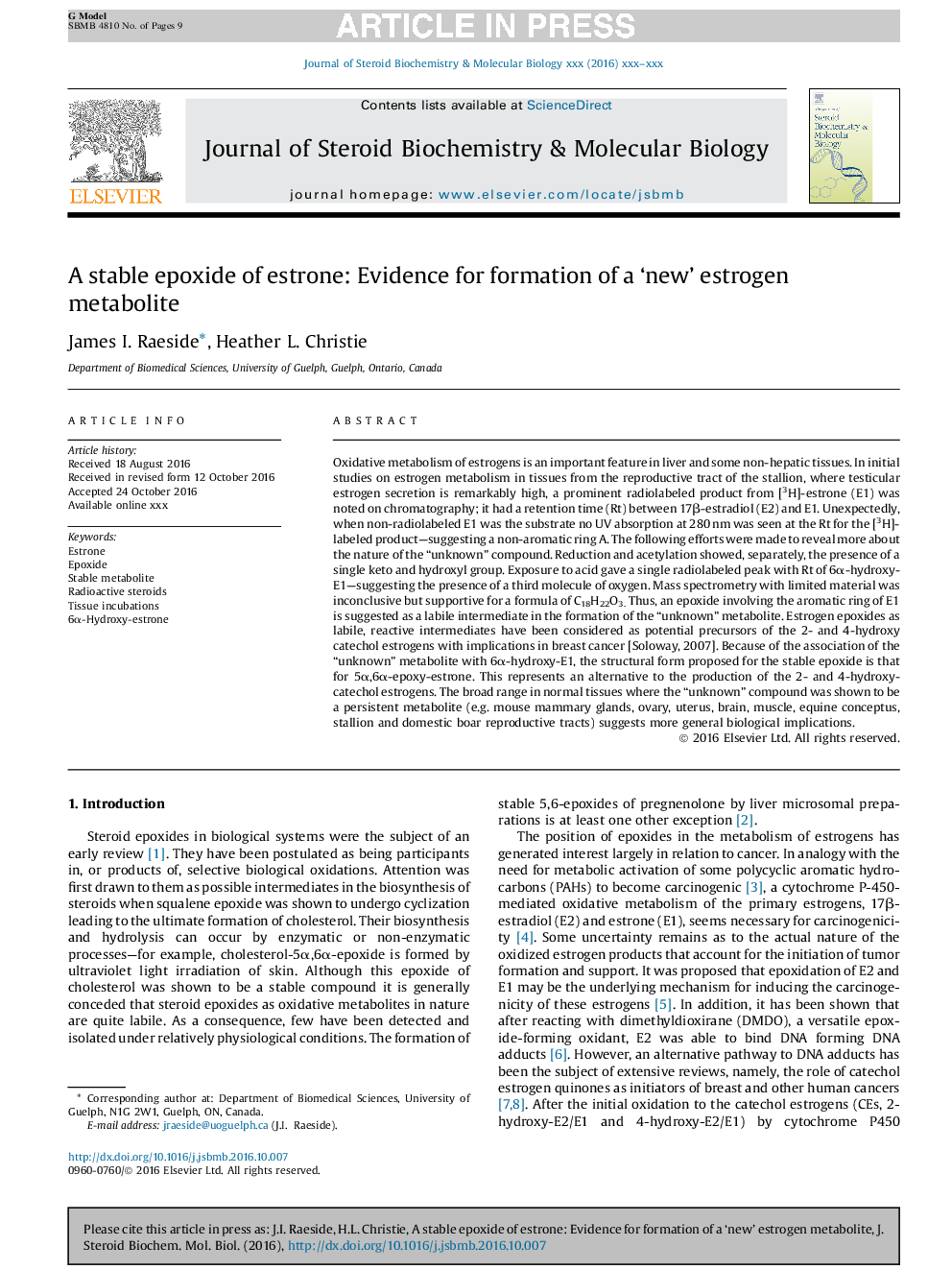| کد مقاله | کد نشریه | سال انتشار | مقاله انگلیسی | نسخه تمام متن |
|---|---|---|---|---|
| 5513106 | 1540980 | 2017 | 9 صفحه PDF | دانلود رایگان |
عنوان انگلیسی مقاله ISI
A stable epoxide of estrone: Evidence for formation of a 'new' estrogen metabolite
ترجمه فارسی عنوان
اپوکسید پایدار استرون: شواهدی برای تشکیل متابولیت استروژن جدید است
دانلود مقاله + سفارش ترجمه
دانلود مقاله ISI انگلیسی
رایگان برای ایرانیان
کلمات کلیدی
موضوعات مرتبط
علوم زیستی و بیوفناوری
بیوشیمی، ژنتیک و زیست شناسی مولکولی
زیست شیمی
چکیده انگلیسی
Oxidative metabolism of estrogens is an important feature in liver and some non-hepatic tissues. In initial studies on estrogen metabolism in tissues from the reproductive tract of the stallion, where testicular estrogen secretion is remarkably high, a prominent radiolabeled product from [3H]-estrone (E1) was noted on chromatography; it had a retention time (Rt) between 17β-estradiol (E2) and E1. Unexpectedly, when non-radiolabeled E1 was the substrate no UV absorption at 280 nm was seen at the Rt for the [3H]-labeled product-suggesting a non-aromatic ring A. The following efforts were made to reveal more about the nature of the “unknown” compound. Reduction and acetylation showed, separately, the presence of a single keto and hydroxyl group. Exposure to acid gave a single radiolabeled peak with Rt of 6α-hydroxy-E1-suggesting the presence of a third molecule of oxygen. Mass spectrometry with limited material was inconclusive but supportive for a formula of C18H22O3. Thus, an epoxide involving the aromatic ring of E1 is suggested as a labile intermediate in the formation of the “unknown” metabolite. Estrogen epoxides as labile, reactive intermediates have been considered as potential precursors of the 2- and 4-hydroxy catechol estrogens with implications in breast cancer [Soloway, 2007]. Because of the association of the “unknown” metabolite with 6α-hydroxy-E1, the structural form proposed for the stable epoxide is that for 5α,6α-epoxy-estrone. This represents an alternative to the production of the 2- and 4-hydroxy-catechol estrogens. The broad range in normal tissues where the “unknown” compound was shown to be a persistent metabolite (e.g. mouse mammary glands, ovary, uterus, brain, muscle, equine conceptus, stallion and domestic boar reproductive tracts) suggests more general biological implications.
ناشر
Database: Elsevier - ScienceDirect (ساینس دایرکت)
Journal: The Journal of Steroid Biochemistry and Molecular Biology - Volume 167, March 2017, Pages 39-47
Journal: The Journal of Steroid Biochemistry and Molecular Biology - Volume 167, March 2017, Pages 39-47
نویسندگان
James I. Raeside, Heather L. Christie,
